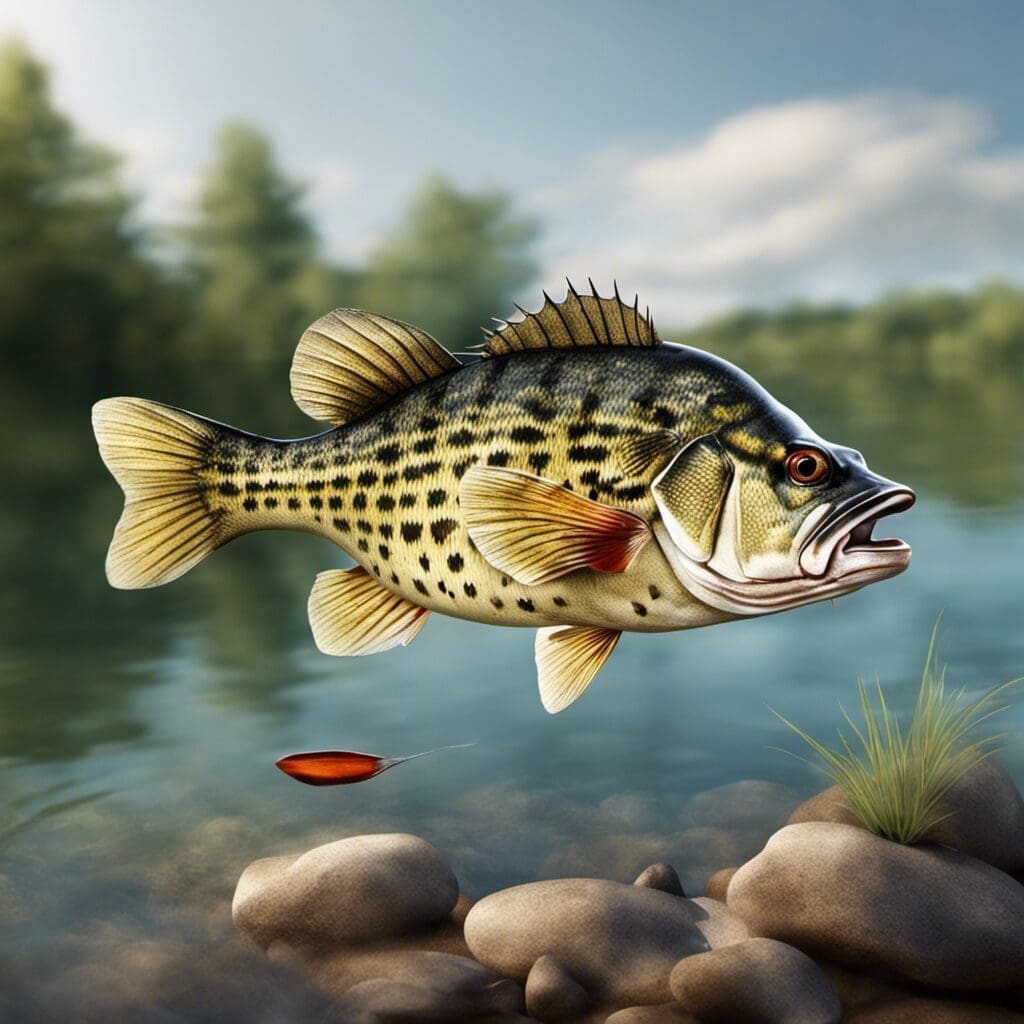Introduction
The Rock Bass (Ambloplites rupestris) belongs to the family Centrarchidae and is a popular sport fish. It is a small, robust fish known for its spunk when caught.
Conservation Status
According to the United States Fish and Wildlife Services, the Rock Bass is not considered to be a threatened or endangered species. Conservation efforts have not been widely implemented due to their stable population status.
Statistics
| Characteristic | Average | Range |
|---|---|---|
| Length | 6-8 inches | 4-12 inches |
| Weight | 1 pound | 1-3 pounds |
| Lifespan | 10 years | 8-12 years |
Distribution
Rock Bass are native to the northeastern United States but have spread to other regions through transplantation. They have become established in areas where they have been introduced, and are especially prevalent in the Midwest. There is no known large-scale annual migration for this species.
Habitats
Rock Bass prefer clear, rocky, and vegetated stream habitats, favoring lakes, reservoirs, and streams with plenty of cover. They often occupy the middle to bottom water zones and have a temperature preference of 12-20⁰C.
When and Where to See
Rock Bass are active throughout the year but are most frequently caught during the late spring, summer, and early fall. They are most active during late afternoon and twilight.
Best Fishing Locations
Top Fishing Spots:
- Lake Michigan, USA
- Lake Erie, USA
- Mississippi River, USA
- Lake Ontario, Canada
- Lake of the Woods, Canada
When fishing for Rock Bass, find areas with plenty of rocks or fallen trees as they tend to stay near such cover.
How to Catch
Rock Bass will bite on a variety of baits, but worms and small crayfish are the most effective. They can be caught using most methods, including fly fishing, bottom fishing, and trolling. Their greatest activity is around dusk.
Identification Guide
Rock Bass are generally dark olive with a mottled or spotted pattern. They are characterized by their large, red eyes, and spiny dorsal fin. They are often mistaken for smallmouth bass due to their similar coloring and shape.
Culinary
Rock Bass’s flaky white meat is generally considered good quality, mild in flavor with low levels of oiliness. It’s not commercially harvested due to its relatively small size, but is often caught by anglers for personal consumption.
Additional Information
Rock Bass feed on small fish and aquatic insects. It’s a productive spawner with males guarding the nests. Predators include larger fish and birds. There are no specific cultural or historical associations with the Rock Bass.
References and Further Reading
For more insight into Rock Bass:
- NOAA Fisheries – Rock Bass
- Inland Fisheries Ireland – Rock Bass

